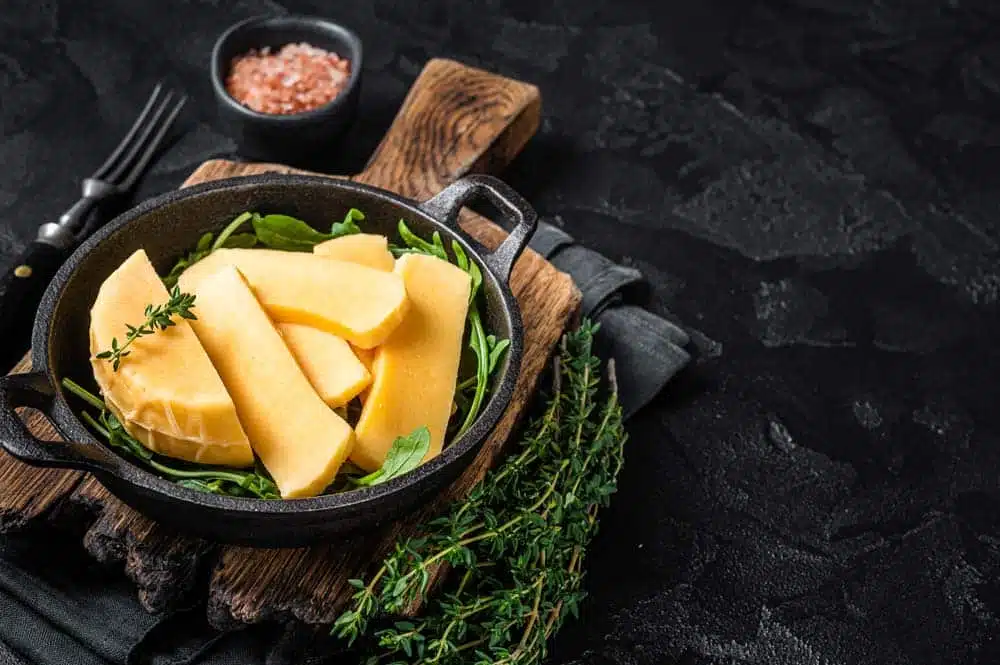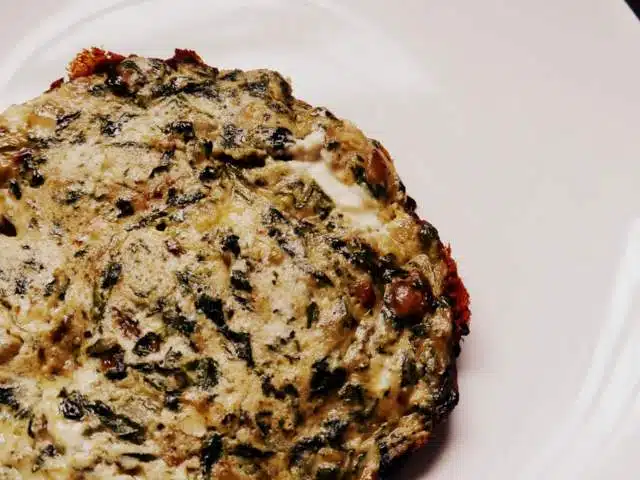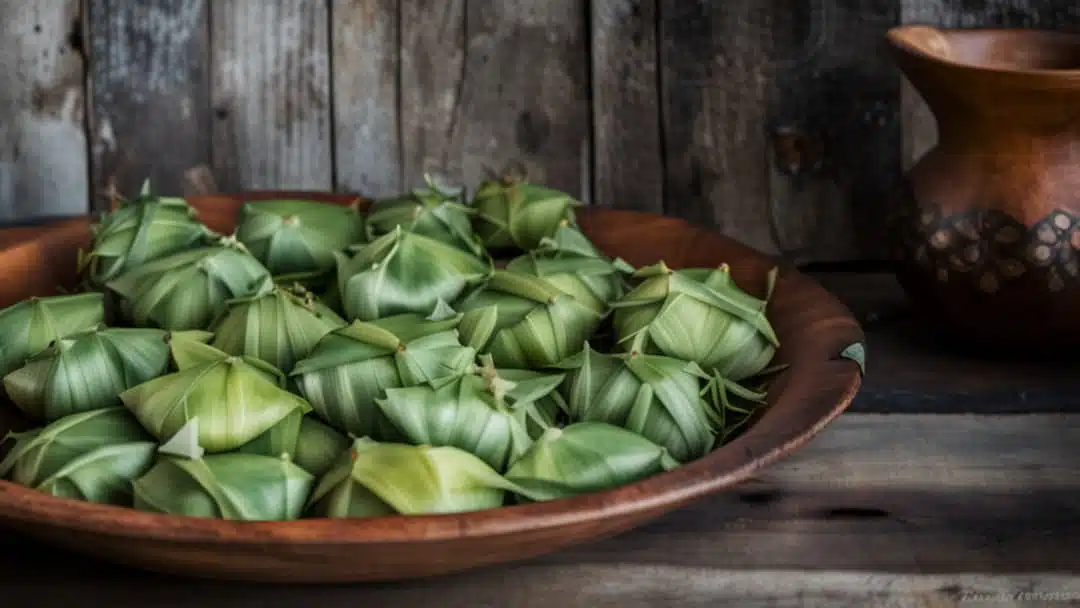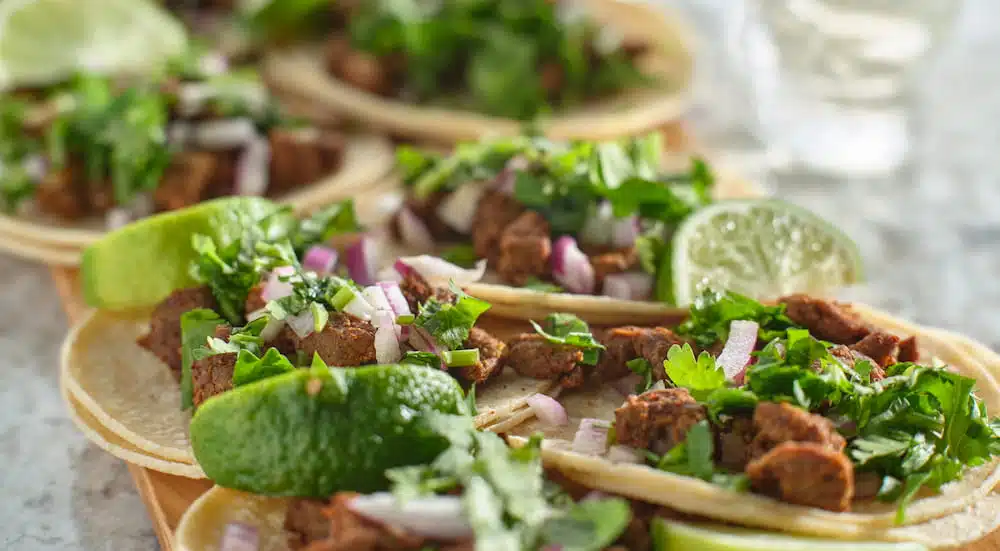Welcome to another episode of Paulina Cocina! How are you all? I want to warn you that today's menu has gotten a bit out of hand because we're going to cook with the most delicious cheese on the planet: Halloumi Cheese .
for this special occasion, we looked for a must-have recipe, since this is a cheese that gives us the gift of being very resistant to high temperatures and this opens the door to several options, such as cooking it with cheese on the griddle or cooking it directly on the grill, which turns out very well.
Well, no, today we're going with a recipe that anyone without a grill at home can make. It's easy but also helps us get the most out of halloumi. So let's see what it has to offer, from Cyprus to the world.
Content table
About halloumi cheese
Halloumi is a soft, semi-hard cheese originating in southeastern Europe, particularly Cyprus, and from there it spread throughout the world, causing a stir and turning anyone who tries it into a fanatic. In some places, it's also known as "squeaky cheese" or "Cypriot cheese."
This cheese is made from fresh goat's milk or sheep's milk, generally both of which work very well due to their fat content. Sometimes you can also find cheese made with cow's milk, but this is mostly in a more industrial format, as the latter considerably reduces preparation costs. Some people add mint to the cheese's production process to protect the food from bacteria.
Its unique preservation method is that it is stored folded together with its natural juices, along with a little water and salt. It is then vacuum-sealed and can be kept frozen for up to a year .
Halloumi can be incorporated into your diet in many ways. It's high in protein and calcium, and low in sodium. Halloumi can be eaten raw, grilled, fried, or baked. You can also use it as a topping for pizzas and pasta, or add it to salads and sandwiches.
The name “halloumi” means “preserved in brine” and has its origins in ancient Greek, from the term “als,” meaning salt.
Different uses of Halloumi in the kitchen
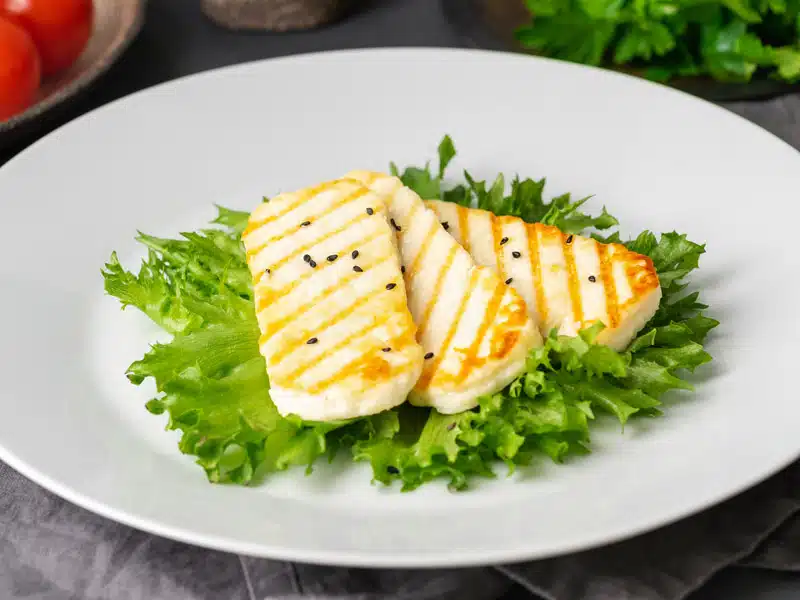
As we mentioned at the beginning, the most typical way to cook Halloumi is on the grill , because it's designed to withstand high temperatures. The magic factor is that it doesn't melt at all, as a crispy layer forms on the outside that keeps the inside creamy. Its raw texture is particularly elastic and fibrous.
Grilled, fried, or thinly sliced on the griddle are the most common ways to cook Halloumi cheese.
Other delicious ways to consume this cheese are in salads , of course! It's a real showstopper in a Caprese salad. This cheese can easily replace any other classic cheese, providing a distinctive flavor (mozzarella has been left out of the mix; we love you, mozzarella).
It is important to remember that Halloumi cheese does not melt when heated like other cheeses.
Although it can be eaten raw, it's best to heat it to enhance its flavor. Once cooked, halloumi is truly delicious. Should we make a cheese-only roast? Send.
Traditional halloumi from Cyprus
There's a way to eat this cheese that's very traditional in its region , but it can lead to disagreements with Carlos and all the haters of sweet and sour mixtures. The star recipe in Europe is halloumi accompanied by fruit . I can tell you right now it's delicious, and I highly recommend trying it with watermelon or melon—delicious.
About today's recipe
We're here now, and get your table ready because this recipe takes 10 minutes . And we brought it especially for you (we know you have a hard time waiting for long cooking times). They're little cheese sticks. And don't underestimate them until you try them. Did we mention the crispy coating that the cheese develops at high temperatures? This recipe is just that.
sticks can be cooked directly in hot oil without coating them in flour. This part could be optional, but remember that we're adding some flavorful seasonings to the flour.
Let's see what the recipe is like ?? and while the oil is heating you can prepare some dip to spread them and be very happy.
Fried halloumi sticks recipe
Ingredients
(The proportions will vary depending on the number of sticks you want to make)
- Halloumi cheese.
- Common Flour.
- Paprika
- Ground chili.
- Oil.
How to make halloumi cheese sticks
- Cut the cheese into square sticks that are not too large.
- Meanwhile, in a bowl, pour the flour and season with a pinch of paprika and ground chili. Then mix everything together thoroughly.
- Coat each cheese stick with the flour mixture, covering them completely.
- Finally, heat plenty of oil to 170–180°C. When the oil reaches the indicated temperature, it's time to submerge each cheese stick until golden brown.
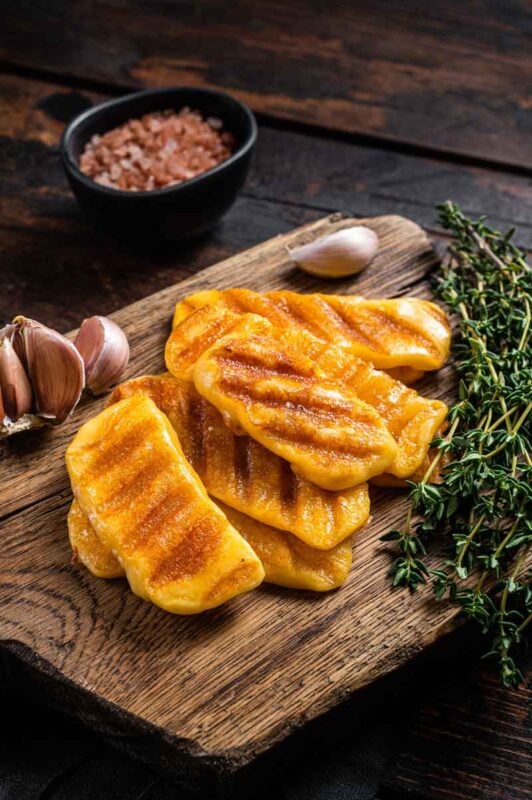
Halloumi substitutes
Halloumi is a type of cheese originating in Cyprus. It is made from sheep's milk, and sometimes from a blend of sheep and goat's milk. The cheese is white, high in fat, and has a firm texture. Halloumi is traditionally used in Cypriot cuisine and is often fried or grilled. It can also be eaten raw.
Some say halloumi tastes like a cross between mozzarella and feta cheese. Others say it has a unique flavor that can't be compared to any other cheese. Halloumi is a versatile cheese that can be used in many different dishes. It's often fried or grilled, and it's an excellent addition to salads and sandwiches. It can also be eaten raw and is often used as a topping for pizzas and pasta.
Where to buy halloumi
Halloumi is available in most supermarkets. It can also be purchased online.
Frequently Asked Questions about Halloumi
What is halloumi made of? Halloumi is made from sheep's milk, and sometimes from a blend of sheep and goat's milk. The cheese is white, has a high fat content, and a firm texture.
Is halloumi a healthy cheese? Yes, halloumi is a healthy cheese. It's high in protein and calcium, and low in sodium.
Can you eat halloumi raw? Yes, halloumi can be eaten raw. Halloumi is often used as a topping for pizzas and pasta.
